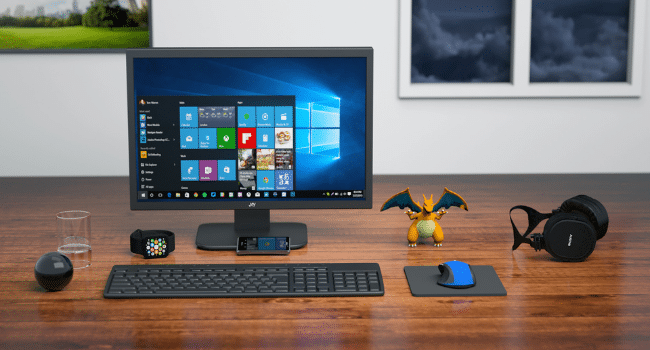Table of Contents
When you’re in the market to buy monitors, you want your experience to be easy. You want to know what you need in a monitor; how it will help your business, and which brands are best. Choosing the best screen for your computer can be a daunting task for those not experienced in separating the wheat from the chaff. I’ve tested hundreds of displays, and have come up with a step-by-step guide on choosing the best monitor for your needs. This article looks at all aspects of monitor testing and gives you a set of guidelines to help you make an informed decision.
The Main Difference Between Monitors
The main difference between monitors is their resolution, which is the number of pixels on the screen. A pixel is one of the tiny dots that make up what you see on your screen. The more pixels your monitor has, the more detail it can display. The three most common types of resolutions are:
- Standard Definition (SD): 640 x 480
- High Definition (HD): 1920 x 1080
- Ultra High Definition: 3840 x 2160
What Panel Type Do You Want?
Panel type in monitors refers to the LCD screen that is used to display the monitor’s information. There are many different types of panel types, each with its own pros and cons. A few popular types of panels are IPS panels and TN panels.
There are three main types of monitors:
- TN (Twisted Nematic)
- VA (Vertical Alignment)
- IPS (In-Plane Switching)
The differences between each type of panel can drastically affect the quality of your gaming experience. You’ll want to consider several factors when choosing between these panel types, including their strengths and weaknesses.
IPS panels are better than TN panels. IPS is a display type that offers the best viewing angles and image quality, with the most accurate colors. TN panels have the fastest response times but suffer from poor viewing angles and color reproduction.
Which Monitor Size Is Best For You?
It’s easy to get overwhelmed by all the choices you have when buying a new computer monitor. Size, resolution, refresh rate, panel type — what do all these terms mean?
Once you’ve figured out how much you’re willing to spend on a monitor, the next step is picking out the right size. A bigger screen doesn’t necessarily mean a better picture, and there are other factors to consider beyond price. Here’s how to find the right size of the monitor for your needs.
Choosing the right size of the monitor depends on your budget and workspace, but also on how far away you’ll be sitting from it.
Should Your Monitor Be Full HD Or 4K?
If you’re looking to get a new monitor, one of the first things you should consider is what resolution you want it to have. Full HD and 4K are the most common choices, but they’re not the only ones.
Here’s what you need to know in order to find out which is right for you.
Full HD (1,920 x 1,080) offers roughly 2 megapixels, so if your GPU has DVI or HDMI 1.0 outputs that can support 1080p, then it’ll be able to drive a 1080p monitor at its native resolution.
4K (3,840 x 2,160) provides roughly 8 megapixels of screen space and requires HDMI 1.4 or DisplayPort 1.2 from your GPU in order to display a 4K monitor at its native resolution.
Which Ports Does Your Monitor Need?
If you’re in the market for a new monitor, one of the most important considerations is how you’ll connect it to your computer. Consider your computer’s current and future needs, and then go shopping.
How to pick the right port for your monitor
Here are some guidelines:
DP/Mini DP and HDMI. These ports will support your 4K display needs. The best way to connect a 4K display is with a direct cable connection via mini-DisplayPort or HDMI. These ports are capable of handling the bandwidth demands of 4K video at 30Hz and 60Hz, respectively. (Note: HDMI 2.0 does support 4K at 60Hz, but you’d need an HDMI 2.0 port.)
Thunderbolt 3. You can consider Thunderbolt 3 ports to be future-proof — anything you can do today, you’ll be able to do using Thunderbolt 3 connections in the future. That includes connecting multiple displays, using high-speed storage devices, and daisy-chaining other peripherals such as network storage devices and docking stations. In short, if you have only two choices — Thunderbolt 3 or USB Type-C — go with Thunderbolt 3 if you can afford it.
Best Monitors From Huawei
Huawei is a leading global ICT solutions provider. Huawei monitors have been created for people who appreciate writing and viewing their work on the best possible digital display. Huawei monitors are some of the best PC LCD screens in the world. If you need to purchase a monitor, it’s definitely worth checking out. Check out the huawei monitor special offer from Huawei!
Huawei monitors are constantly being improved. Their latest innovations combine performance and energy productivity to create innovative solutions for modern-day offices. From multi-monitor setups to data cable management, their new monitors make the lives of techies and designers much easier.
Read more on KulFiy
7 Best portable monitor for Laptop
The Best Screens for Your 6 Monitor Setup
10 Best Lenovo Gaming Laptops List 2021 with Buying Guide
10 Best HP Gaming Laptops List 2021 with Buying Guide
